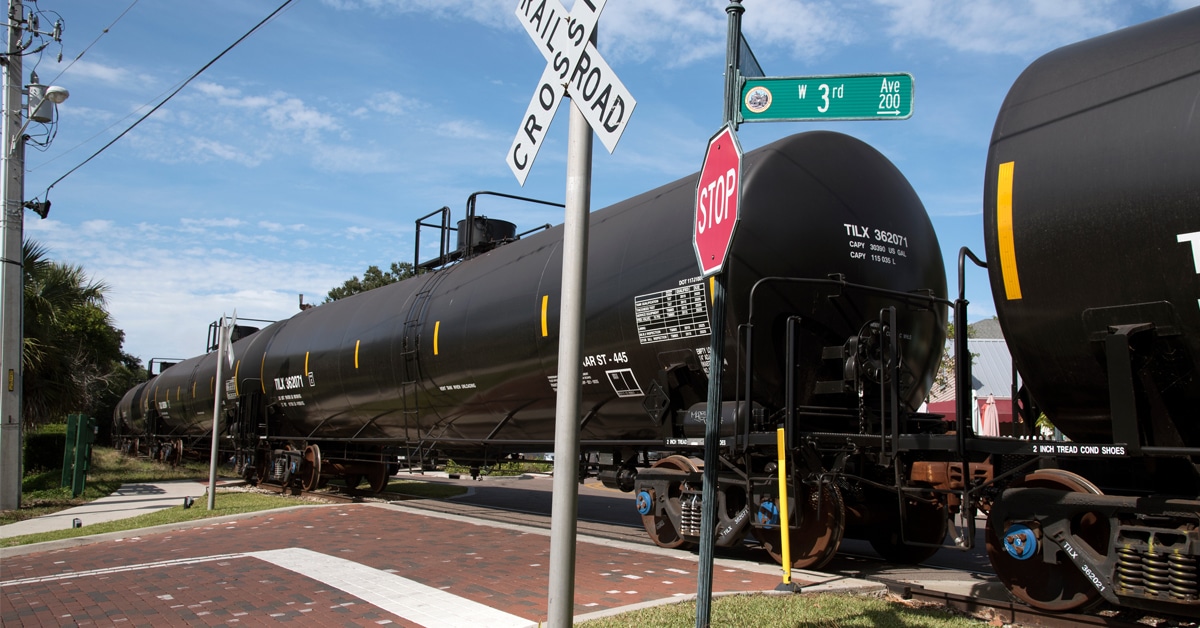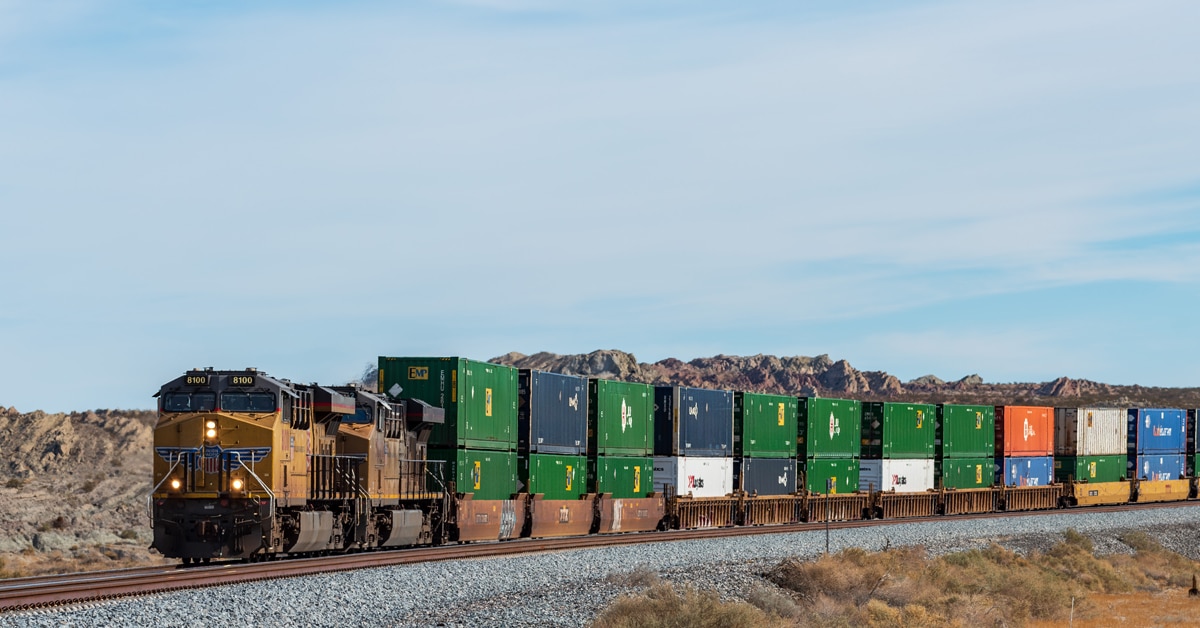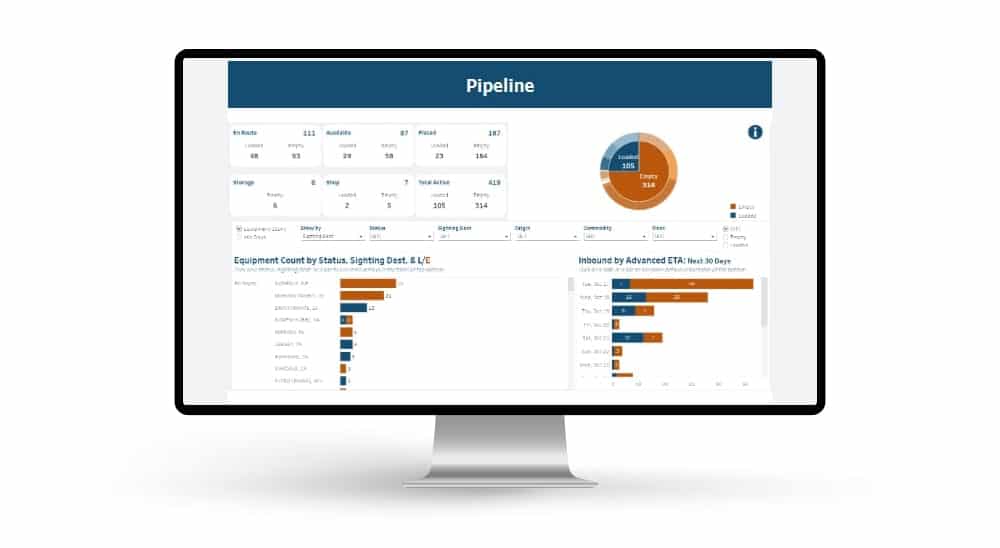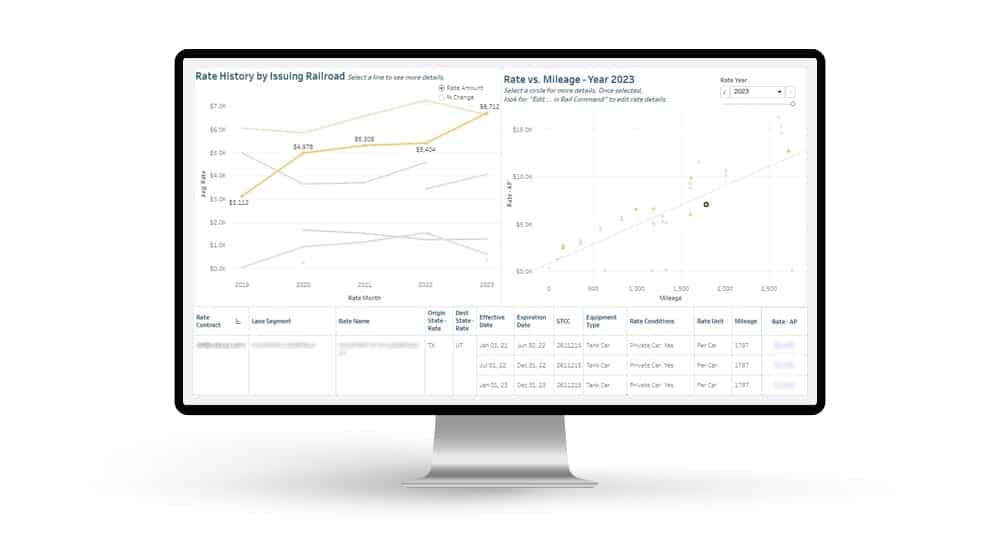Rail logistics is changing fast, with many new ideas and technologies either coming into play or just on the horizon of being adopted. These changes can be hard to keep up with, so we have put together some key trends to be aware of. Our aim is simple: to give you a clear view of what is happening, why it matters, and how you can use this knowledge to improve your business.
First, we’ll delve into the Internet of Things (IoT), a tech trend that is changing how we monitor and manage rail operations. We then jump to data analytics, a tool that turns raw data into useful insights for improving supply chains.
Next, we cover the rise of Machine Learning (ML) and Artificial Intelligence (AI) in rail logistics, exploring how these technologies can help predict problems before they happen and plan routes more efficiently. From there, we discuss the growing use of blockchain for secure data management, and then investigate the move towards green logistics for a more sustainable rail industry.
We wrap up with a look at how digital platforms are aiding real-time information sharing and decision-making, followed by the increasing importance of predictive maintenance, helping rail operators detect faults before they cause problems.
These are the trends that are shaping the future of rail logistics. By understanding them, you can make more informed, data-driven decisions, enabling your business to operate more efficiently, reduce costs, and improve customer service. Let’s dive in.
One – Internet of Things (IoT):
A defining technology in logistics spheres, IoT interconnects devices, sensors, and systems across the networks to collect, share and analyze real-time data. In the case of rail logistics, integrated IoT devices within rail cars, tracks, and even cargoes monitor performance, track location, and ascertain cargo’s condition (such as maintaining optimal temperature for perishable goods). This trend aids in proactive decision-making by predicting potential disruptions or malfunctions before they evolve into more significant issues, therefore enhancing efficiency and reliability.
Two – Data Analytics in Tracking and Tracing:
Data has always been collected and stored by railroads and rail shippers, but not until recently has data analytics become a pillar for enhancing operational efficiency in logistics. By extracting and scrutinizing tracking and tracing data elements from myriad sources (GPS, IoT devices, etc.), patterns and potential bottlenecks are identified. Ultimately, this data-driven approach boosts schedule adherence and customer satisfaction, ushering in an era of transparency and demystified decision-making in rail operations.
Three – Machine Learning (ML) & Artificial Intelligence (AI):
ML and AI are powerful tools for predictive and prescriptive analytics in rail logistics. They enable scenarios such as equipment failure predictions, optimal route planning, and accurate freight demand forecasting. Consequently, schedulers and route planners can decrease operational expenses and minimize downtime significantly, revolutionizing how rail operators tackle preventive maintenance and demand planning. Though both ML and AI are still in varying stages of adoption, it is likely the rail shipping industry will see a continued push to explore the viability of both forms of learning and integration.
Four – Blockchain Technology:
Blockchain’s primary attributes are its transparency and indelible security. In rail logistics, it provides a traceable and secure record for transactions, eliminating potential discrepancies in data management. By creating a decentralized and fixed ledger of events it not only increases trust among stakeholders but streamlines contractual processes, enhancing overall business efficiency.
Five – Green Logistics:
Emphasizing sustainability is no longer a mere tick box exercise. It is a competitive necessity. Green logistics involves strategies to minimize the carbon footprint, focusing on elements like reduced emission engines and eco-friendly practices in rail yards— driving a shift towards a more sustainable and environmentally conscious rail logistics industry. Rail shipping is one of the cleanest forms of energy over long distances, compared to other modes such as truck or air, and new advancements in engines and rail cars continue to push the boundaries of rail’s green logistics.
Six – Digital Platforms:
Digital platforms have surged as a solid foundation for real-time information sharing and collaborative decisions. They provide a consolidated viewpoint of readings from distinct sources, thereby enabling synchronized operational management. By providing stakeholders access to real-time data, these platforms foster collaborative decision-making and enhance the overall efficiency of rail operations. A significant impact of digital platforms is the ability to combine what used to be multiple programs, systems, and operations into one platform. Smart railcar management software like Rail Command® allows you to have a synchronized system for demurrage management, railcar tracking and tracing, rail rate management, fleet management, and more; all processes that would have, not long ago, required manual effort via multiple methods and sources.
Seven – Predictive Maintenance:
More than just a trend, predictive maintenance in rail logistics is a revolution. By leveraging IoT and data analytics, rail operators can foresee possible faults or equipment failures before they result in substantial downtime. Additionally, logistics providers can transition from reactive to proactive management, promoting significant cost savings, and service reliability.
Each of these sectors, when considered individually and as cogs in the logistics machine, form an intricate network that is profoundly transforming the rail freight landscape. By integrating these trends, rail professionals can effectively navigate an increasingly complex and competitive industry, thus positioning themselves at the forefront of operational efficiency, customer satisfaction, and innovative evolution.



 Automated exception reporting of the railcar tracking data makes it easy to identify and troubleshoot jeopardized shipments, thereby enabling you to provide better service to your stakeholders.
Automated exception reporting of the railcar tracking data makes it easy to identify and troubleshoot jeopardized shipments, thereby enabling you to provide better service to your stakeholders. Receive notification of pending rate expirations. Tariff changes and fuel surcharges can be automatically updated.
Receive notification of pending rate expirations. Tariff changes and fuel surcharges can be automatically updated.